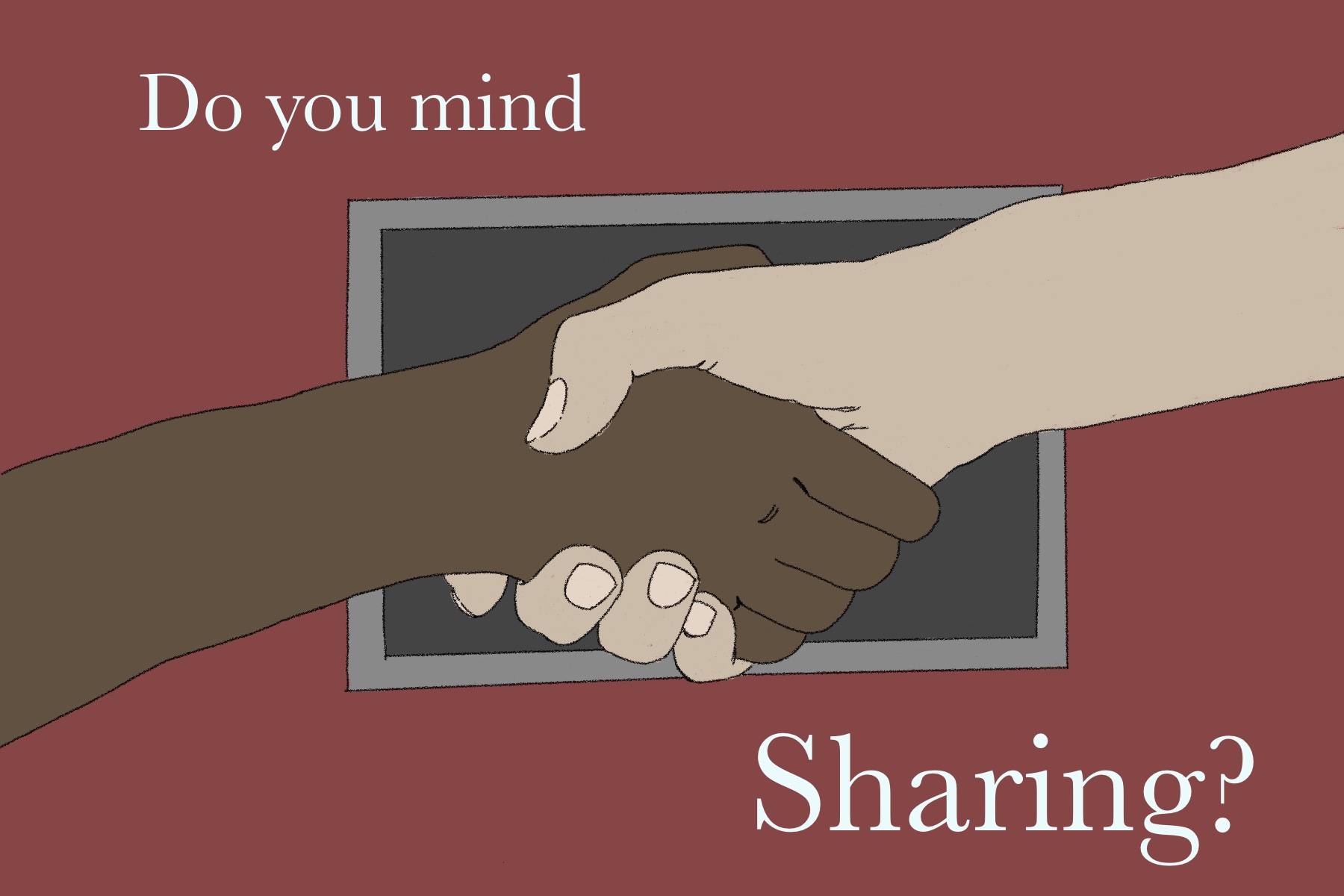In March 2017, Netflix’s Twitter account shared a short, but profound, tweet: “Love is sharing a password.”
They were alluding to the common practice of sharing one’s Netflix password with as many people as possible, a practice that reduces the number of people who pay for an account. Shoutout to Netflix for providing a loophole in their subscription policy for viewers to capitalize on. Whether it’s some friend groups banding together to divvy up the cost of a subscription or parents’ covering the monthly fee for their out-of-state college-bound kids, password-sharing exists purely for ease of access. While the aforementioned tweet was an example of Netflix astutely poking fun at itself, its tone in 2023 has not been as playful.
In May, Netflix enacted harsher regulations on who subscription-holders can share their passwords with by limiting the scope of a household. The company outlined its new rules in an email sent to subscribers who share their password with users outside of the immediate household. They begin the message by bluntly stating that a Netflix account exists for “you and the people you live with—your household.”
This amendment raises the valid question of what Netflix considers a household. They ensure that they are not invasive or breaching privacy by accessing unnecessary GPS data. Rather, Netflix claims to tap into indicators of location like IP addresses and internet connection to determine which devices are being used inside or outside the home. If an outside user attempts to log in, the account holder will be notified and redirected to a list of various choices that they are left with.
Option #1 involves transferring that user’s profile onto a new membership with a different payment method. That profile’s existing algorithm and data will remain intact on the new membership. So Netflix is still forcefully taking the consumer’s money, but they’re also generous enough to make sure that viewers won’t lose their place in a series or get a misguided movie recommendation.
Option #2 requires an additional fee for the account holder. For an extra $7.99 per month, one person outside of the household can access the account. This option essentially puts a price on the subscriber’s relationship with the non-household user. Either scenario forces the consumer’s hand, and either scenario lets Netflix accomplish its goal of walking away with heavier pockets.
To be fair, Netflix’s updated guidelines were not approved without a logical cause. By April 2022, the company had logged a loss of roughly one million subscribers, their first decrease in over a decade. Sensing that they had started to plateau into maturity after years of steady growth, Netflix executives searched for answers.
Part of the subscriber loss may be attributed to the ultra-competitive nature of the streaming market. At Netflix’s inception, they were the only service of its kind in existence, but in the past five years, the popularity of streamers has skyrocketed with the introduction of Peacock, Max, Hulu, Disney+ and more. But, as evidenced by their recent decision, Netflix seems to think that password-sharing is the more harmful factor.
Now that the new sharing policies have been in place for a few months, the numbers have proven Netflix’s strategy successful. As of June 9—just over two weeks after the initial emails were sent—the company charted an average of 73,000 new subscribers per day. Another potential driver of this increase could be Netflix’s addition of an ad-supported plan for three dollars less per month, which was introduced in November 2022.
While the boost in signups has been a welcome sight for Netflix, consumers are less thrilled. Many loyal subscribers have taken to social media to voice their dissatisfaction with what they view as a breach of an unspoken agreement. Content creator Imani Barbarin insightfully argues that with all of the competitors that exist in the streaming industry, “the only reason Netflix remains in public discourse is because people are sharing access.”
The Twitter account of the recently deposed Blockbuster Video even weighed in on the debate with a snarky post that reads: “A friendly reminder that when you used to rent videos from us. We didn’t care who you shared it with… As long as you returned it on time. @netflix.”
Regardless of which side one sympathizes with, the situation is relevant in the broader context of what it means for consumers. The streaming service industry now has a crystal-clear blueprint for how to generate new subscribers and more revenue without spending any money on marketing campaigns or producing new hit shows and movies. Netflix has pioneered a path that other streamers can follow, and consumers need to decide how to react.
With monthly billing from a mountain of streaming services piling up, customers are struggling to justify the expenditure. The potential option of a bundling plan may ease some of the financial strain, but the world is so media-saturated that audiences must start to wonder where the breaking point is. Many of the streaming platforms overlap in content (aside from a Netflix Original series or movie, for example), rendering subscriptions to each one redundant.
Maybe the solution requires viewers to choose sides. When forced to pick between Netflix and Hulu, or Amazon Prime and Peacock, what are the deciding criteria? Does content outweigh cost, or vice versa? There is no universally correct answer, but Netflix’s decision to update its sharing guidelines has forced consumers to ask these types of questions.
This exchange between company and consumer likens itself to a duplicitous cat-and-mouse game. Subscribers try to pull one over on Netflix by liberally sharing their password with whoever wants it. Netflix cunningly responds by offering users an ultimatum: either quit rigging the system or fork over extra money every month to continue accessing our content.
Given Netflix’s unfathomable level of popularity and omnipresent social influence, it seems as though they have the upper hand. Consumers can feel all the moral outrage imaginable, but it will never outweigh the dread of parting with their favorite Netflix Original series.
















